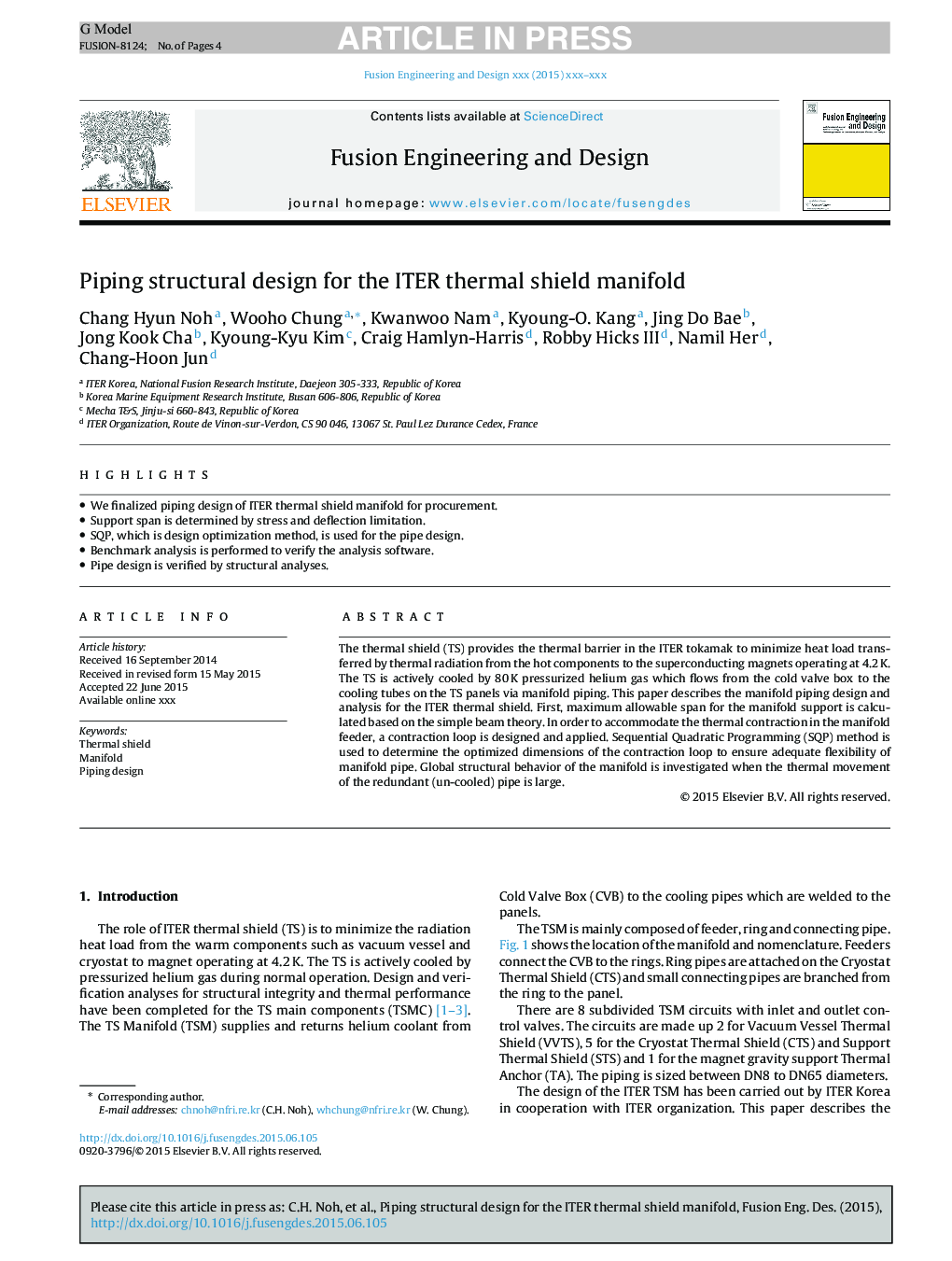| Article ID | Journal | Published Year | Pages | File Type |
|---|---|---|---|---|
| 6746239 | Fusion Engineering and Design | 2015 | 4 Pages |
Abstract
The thermal shield (TS) provides the thermal barrier in the ITER tokamak to minimize heat load transferred by thermal radiation from the hot components to the superconducting magnets operating at 4.2Â K. The TS is actively cooled by 80Â K pressurized helium gas which flows from the cold valve box to the cooling tubes on the TS panels via manifold piping. This paper describes the manifold piping design and analysis for the ITER thermal shield. First, maximum allowable span for the manifold support is calculated based on the simple beam theory. In order to accommodate the thermal contraction in the manifold feeder, a contraction loop is designed and applied. Sequential Quadratic Programming (SQP) method is used to determine the optimized dimensions of the contraction loop to ensure adequate flexibility of manifold pipe. Global structural behavior of the manifold is investigated when the thermal movement of the redundant (un-cooled) pipe is large.
Keywords
Related Topics
Physical Sciences and Engineering
Energy
Energy Engineering and Power Technology
Authors
Chang Hyun Noh, Wooho Chung, Kwanwoo Nam, Kyoung-O. Kang, Jing Do Bae, Jong Kook Cha, Kyoung-Kyu Kim, Craig Hamlyn-Harris, Robby III, Namil Her, Chang-Hoon Jun,
